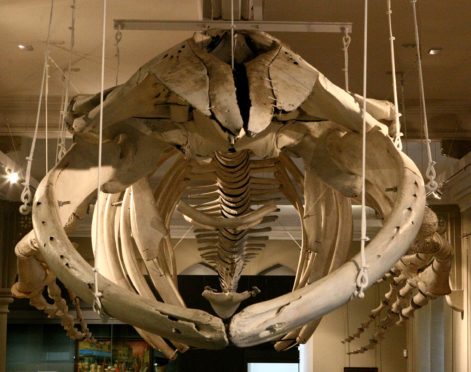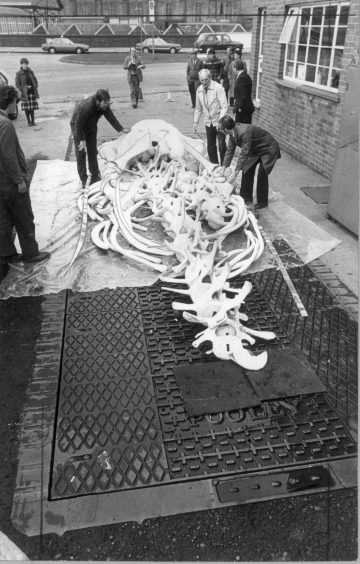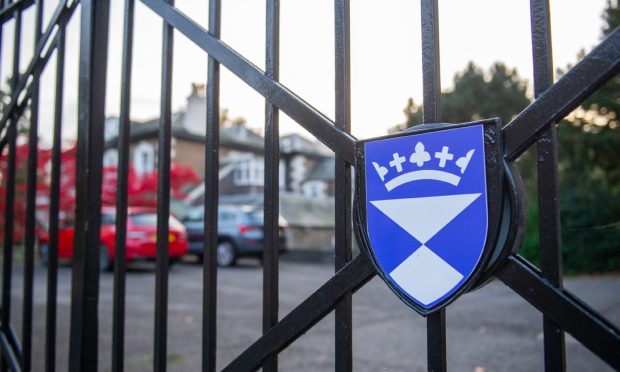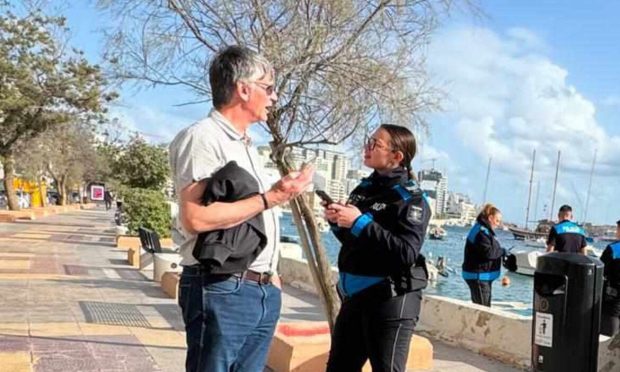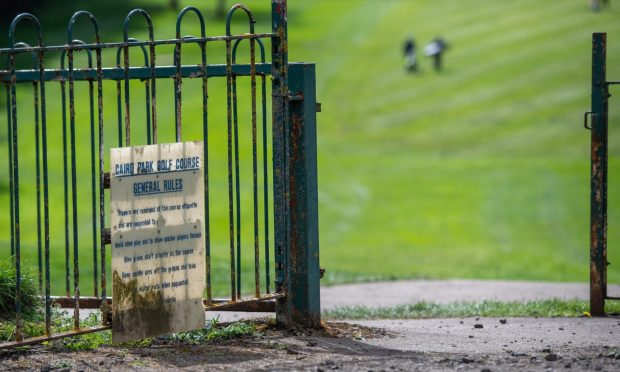It was ‘The Monster’ whose appearance in the Tay sparked an incredible Jaws-esque chase.
The 16.5-tonne, 40-foot long “great Tay whale” was harpooned by Dundee sailors and chased to its end 45 miles up the Mearns coast in 1883.
Its skeleton, a prize among Victorian scholars so valuable that two men stopped at nothing to obtain and study it, remains hugely popular 135 years on at the McManus in Dundee.
A humpback whale entered the Tay estuary in November and was hunted by a procession of whalers which set out to snare the beast over Christmas.
After several failed attempts, on Hogmanay, a harpoonist managed a direct hit but the male towed two rowing boats and two steamboats as far as Montrose.
The harpoon lines broke and the whale escaped north, but was next seen stricken off Bervie Brow by Alex Ritchie, skipper of the Gourdon fishing boat The Olive Branch.
Two other boats helped get a line across the tail and towed the carcass to Stonehaven.
It was auctioned and bought by showman John Woods of Dundee for £226 and was towed back to Dundee to be stripped of the blubber and for public exhibition.
Woods was described as an enterprising Dundee merchant and a dealer in polar bears, Russian bears, seals, Arctic foxes and monkeys.
He bought wild animals from skippers of ships and kept them near his house in Roodyards Road, close to the gasholders on Dock Street.
Woods put the dead animal on show in a gigantic tent next to Dundee flour mill in East Dock Street.
In time, many of the animals were sold on to circus owners who visited Dundee.
Woods charged the public a shilling to see the whale in daytime and sixpence at night when the tent was lit by paraffin lamps.
Thousands were ferried from High Street to East Dock Street in buses to see the corpse and children skived school so they could see it.
Next the whale was displayed in Glasgow and Liverpool but by that time there was little left of the creature bar the crippling smell, so the bones were presented to Dundee museum.
The chase was immortalised by William McGonagall whose poem The Famous Tay Whale is just as well-known as his take on the Tay Rail Bridge disaster.
The whaling industry was hugely important in Dundee, spanning more than 130 years and only ceasing in 1914.
The industry employed large numbers of people and brought great prosperity to communities, given the constant requirement for whale oil as a source of lighting.
Huge ships would sail to the Arctic in search of the mammals which, once detected, were harpooned before they were gutted — the precious oil being found within the unfortunate animal’s blubber.
While Dundee became the best-known whaling port in the UK, other communities also enjoyed the economic advantages brought by the brutal trade.
Dundee SNP councillor Will Dawson said: “Whaling is a part of our history and perhaps one that we are not as proud of as others.
“Whilst we can look back on these issues that made Dundee famous and wealthy at the time, we should also use the story of the whale to look at conservation for the future.”
